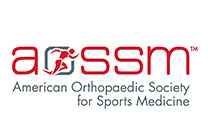Just Not Hip
A serious hip injury is a diagnosis no player wants to hear, but with early attention and advanced treatment options, it's no longer the career ending-problem it once might have been By DR. SRINO BHARAM
It's important to remember that those aches and pains you've always shrugged off could in fact be something more serious . . . get that hip checked out.
Apprehension would have flooded through Lleyton Hewitt's mind after hearing he'd be missing both a Davis Cup tie and the 2008 US Open to repair a labral tear on his left hip. If the same diagnosis were given about 10 years ago, nearly every doctor would have told him his tennis career was over. Thanks to relatively new advanced techniques in the field of orthopaedics, however, minimally invasive surgery called hip arthroscopy can allow athletes like Hewitt to return to competition within a few months.
The problem many athletes face with hip injuries, and labral tears in particular, is that often times these injuries go misdiagnosed. One study conducted by the Journal of Bone and Joint Surgery in America concluded that patients go through an average of 3.3 health care professionals before receiving the correct diagnosis of a torn labrum.
The majority of tennis-related hip injuries are characterised as hip flexor injuries. However, several of these may actually be more involved and complex, and may be the result of a cartilage tear in the hip. Bony growths occurring inside the hip joint can rip the labrum, resulting in a labral tear and hip impingement. Untreated hip injuries like this one can lead to further cartilage damage, and over time osteoarthritis in the hip.
Due to the frequent repetitive motions during performance and training, tennis players are particularly prone to cartilage tears in the hip. Essentially, it's that loading and rotating motion of the hip coupled with the open stance forehand that applies stress to the hip, causing pain and inflammation over time. Many elite players go through the common routine of hitting multiple hoppers through a ball machine in one training session, which places the hip at risk for injury.
The best preventive tool in avoiding a painful injury to the hip is awareness. It's important to make sure you properly stretch your hips before a workout routine, and to minimise frequent repetitive motions that will cause stress on your hips. It is imperative that a good hip-strengthening program is a part of any tennis player's workout, as developing the surrounding muscles will decrease stress on the hip.
A labral tear is usually first presented by a dull ache or soreness in the hip during or after activity, and is sometimes associated with a clicking sound. If you think you may be suffering from a potentially serious hip injury, consult with your primary care physician to refer you to an orthopaedic specialist who can give you an accurate diagnosis. Neglecting a labral tear could potentially lead to irreversible osteoarthritis in the hip.
It's important to remember that those aches and pains you've always shrugged off could in fact be something more serious. Make sure you don't play through the pain - get that hip checked out.
Dr. Srino Bharam is a US hip specialist and orthopaedic surgeon who has been performing advanced techniques in hip arthroscopy over the past eight years, including the treatment of elite and recreational athletes nationwide. For further information visit srinobharammd. com
- Click here to download magazine











